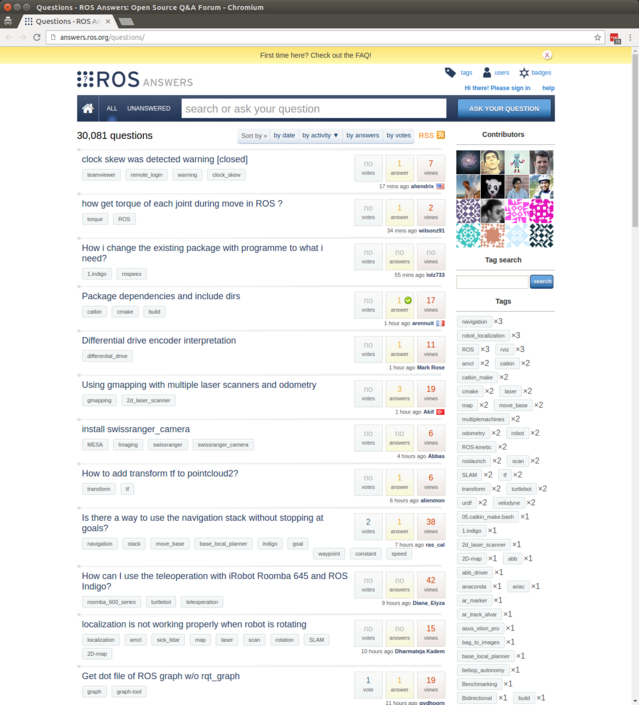From Anis Koubaa via ros-users@
Gaitech International Ltd http://www.gaitech.hk/ is happy to announce the
release of its educational portal, Gaitech EDU.
Website: http://edu.gaitech.hk/
Gaitech EDU provides a comprehensive educational framework on Robot
Operating System (ROS) through a series of tutorials and online videos.
Gaitech EDU is an educational website on robotics and in particular on
Robot Operating System (ROS). The objective is to provide an easy-to-follow
educational content that helps in better mastering the concepts of ROS and
promoting its use for developing robotics software. Gaitech company strives
to contribute to the development of ROS and provides its customers and ROS
users with technical support and an open education framework to learn ROS.
Gaitech Education website is NOT meant to be a substitue of ROS wiki
documentation website, but a complementary website that is more oriented to
providing education and teaching material.
As the primary objective of Gaitech EDU is to promote education of ROS,
tutorials were designed with teaching objectives in mind. Each tutorial
starts with Learning outcomes that the student or the learned is expected
to know at the end of the tutorial. Then, the tutorial is provided in both
textual format and/or video illustrations. Finally, a series of review
questions are proposed so that the student self-evaluation his
understanding about the concepts presented in the tutorial.
It can be used as additional teaching resources in robotics courses using
ROS.
More details could be found in the FAQs in the website
http://edu.gaitech.hk/
In addition, Gaitech provides the Gaitech EDU Forum
http://forum.gaitech.hk/ where users and customers may ask questions and
post comments about the educational content. In addition, a mailing list
http://lists.gaitech.coins-lab.org/listinfo.cgi/gaitech_edu_users-gaitech.coins-lab.org
is available to stay tuned with any updates of the educational content.
Enjoy using and sharing Gaitech EDU portal. We will be happy to receive
your comments about the Gaitech EDU Portal.







